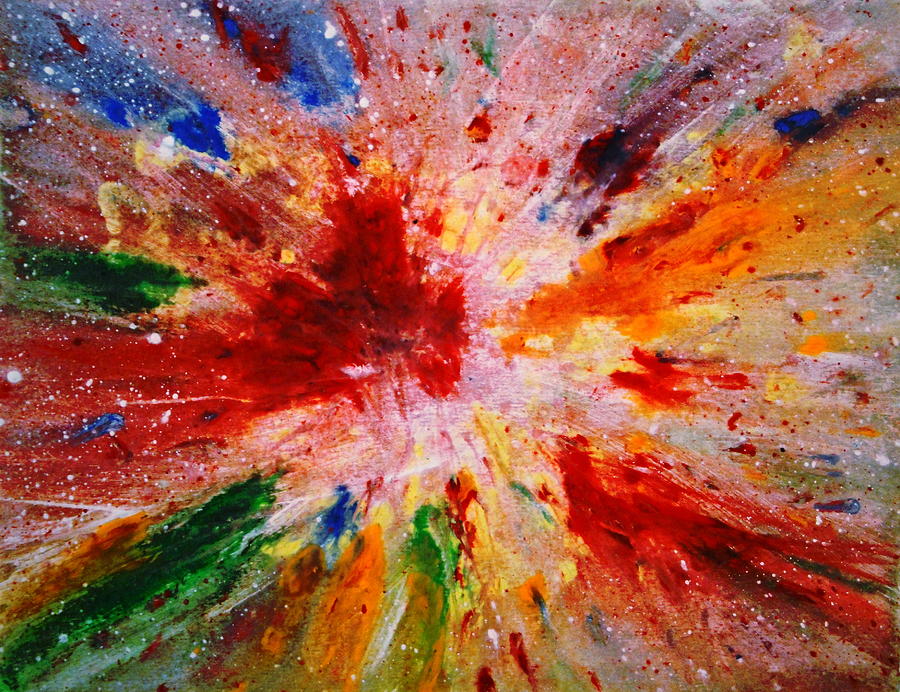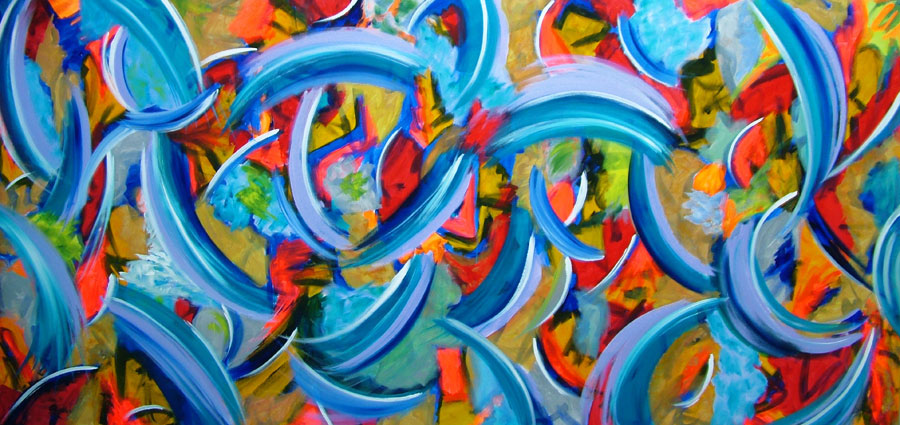ART NOUVEAU SYNOPSIS
Art Nouveau was a movement that swept through the decorative arts and architecture in the late 19th and early 20th centuries. Generating enthusiasts throughout Europe and beyond, the movement issued in a wide variety of styles, and, consequently, it is known by various names, such as the Glasgow Style, or, in the German-speaking world,Jugendstil. Art Nouveau was aimed at modernizing design, seeking to escape the eclectic historical styles that had previously been popular. Artists drew inspiration from both organic and geometric forms, evolving elegant designs that united flowing, natural forms with more angular contours. The movement was committed to abolishing the traditional hierarchy of the arts, which viewed so-called liberal arts, such as painting and sculpture, as superior to craft-based decorative arts, and ultimately it had far more influence on the latter. The style went out of fashion after it gave way to Art Deco in the 1920s, but it experienced a popular revival in the 1960s, and it is now seen as an important predecessor of modernism.
ART NOUVEAU KEY IDEAS
The desire to abandon the historical styles of the 19th century was an important impetus behind Art Nouveau and one that establishes the movement's modernism. Industrial production was, at that point, widespread, and yet the decorative arts were increasingly dominated by poorly made objects imitating earlier periods. The practitioners of Art Nouveau sought to revive good workmanship, raise the status of craft, and produce genuinely modern design.
The academic system, which dominated art education from the 17th to the 19th century, underpinned the widespread belief that media such as painting and sculpture were superior to crafts such as furniture design and silver-smithing. The consequence, many believed, was the neglect of good craftsmanship. Art Nouveau artists sought to overturn that belief, aspiring instead to "total works of the arts," the infamousGesamtkunstwerk, that inspired buildings and interiors in which every element partook of the same visual vocabulary.

Many Art Nouveau designers felt that 19th century design had been excessively ornamental, and in wishing to avoid what they perceived as frivolous decoration, they evolved a belief that the function of an object should dictate its form. This theory had its roots in contemporary revivals of the gothic style, and in practice it was a somewhat flexible ethos, yet it would be an important part of the style's legacy to later movements such as modernism and the Bauhaus.
ABSTRACT EXPRESSIONISM SYNOPSIS
Abstract Expressionism was never an ideal label for the movement which grew up in New York in the 1940s and 1950s. It was somehow meant to encompass not only the work of painters who filled their canvases with fields of color and abstract forms, but also those who attacked their canvases with a vigorous gestural expressionism. Yet Abstract Expressionism has become the most accepted term for a group of artists who did hold much in common. All were committed to an expressive art of profound emotion and universal themes, and most were shaped by the legacy of Surrealism, a movement which they translated into a new style fitted to the post-war mood of anxiety and trauma. In their success, the New York painters robbed Paris of its mantle as leader of modern art, and set the stage for America's post-war dominance of the international art world.
Key Points
Most of the artists associated with Abstract Expressionism matured in the 1930s. They were influenced by the era's leftist politics, and came to value an art grounded in personal experience. Few would maintain their earlier radical political views, but many continued to adopt the posture of outspoken avant-gardists protesting from the margins.
Having matured as artists at a time when America suffered economically and felt culturally isolated and provincial, the Abstract Expressionists were later welcomed as the first authentically American avant-garde. Their art was championed for being emphatically American in spirit - monumental in scale, romantic in mood, and expressive of a rugged individual freedom.
The milieu of Abstract Expressionism united sculptors such as David Smith as well as photographers like Aaron Siskind, but above all the movement was one of painters.

Political instability in Europe in the 1930s brought several leading Surrealists to New York, and many of the Abstract Expressionists were profoundly influenced by the style and by its focus on the unconscious. It encouraged their interest in myth and archetypal symbols and it shaped their understanding of painting itself as a struggle between self-expression and the chaos of the unconscious.
EXPRESSIONISM SYNOPSIS
Expressionism emerged simultaneously in various cities across Germany as a response to a widespread anxiety about humanity's increasingly discordant relationship with the world and accompanying lost feelings of authenticity and spirituality. In part a reaction againstImpressionism and academic art, Expressionism was inspired most heavily by theSymbolist currents in late nineteenth-century art. Vincent van Gogh, Edvard Munch, andJames Ensor proved particularly influential to the Expressionists, encouraging the distortion of form and the deployment of strong colors to convey a variety of anxieties and yearnings. The classic phase of the Expressionist movement lasted from approximately 1905 to 1920 and spread throughout Europe. Its example would later inform Abstract Expressionism, and its influence would be felt throughout the remainder of the century in German art. It was also a critical precursor to the Neo-Expressionist artists of the 1980s.
EXPRESSIONISM KEY IDEAS
The arrival of Expressionism announced new standards in the creation and judgment of art. Art was now meant to come forth from within the artist, rather than from a depiction of the external visual world, and the standard for assessing the quality of a work of art became the character of the artist's feelings rather than an analysis of the composition.
Expressionist artists often employed swirling, swaying, and exaggeratedly executed brushstrokes in the depiction of their subjects. These techniques were meant to convey the turgid emotional state of the artist reacting to the anxieties of the modern world.

Through their confrontation with the urban world of the early twentieth century, Expressionist artists developed a powerful mode of social criticism in their serpentine figural renderings and bold colors. Their representations of the modern city included alienated individuals - a psychological by-product of recent urbanization - as well as prostitutes, who were used to comment on capitalism's role in the emotional distancing of individuals within cities.
MODERN ART SYNOPSIS
Modern art represents an evolving set of ideas among a number of painters, sculptors, writers, and performers who - both individually and collectively - sought new approaches to art making. Although modern art began, in retrospect, around 1850 with the arrival of Realism, approaches and styles of art were defined and redefined throughout the twentieth century. Practitioners of each new style were determined to develop a visual language that was both original and representative of the times.
Definition of Modern Art
Modern art is the creative world's response to the rationalist practices and perspectives of the new lives and ideas provided by the technological advances of the industrial age that caused contemporary society to manifest itself in new ways compared to the past. Artists worked to represent their experience of the newness of modern life in appropriately innovative ways. Although modern art as a term applies to a vast number of artistic genres spanning more than a century, aesthetically speaking, modern art is characterized by the artist's intent to portray a subject as it exists in the world, according to his or her unique perspective and is typified by a rejection of accepted or traditional styles and values.

DADA SYNOPSIS
Dada was an artistic and literary movement that began in 1916 in Zurich, Switzerland. It arose as a reaction to World War I, and the nationalism, and rationalism, which many thought had brought war about. Influenced by ideas and innovations from several early avant-gardes - Cubism, Futurism, Constructivism, and Expressionism - its output was wildly diverse, ranging from performance art to poetry, photography, sculpture, painting and collage. Dada's aesthetic, marked by its mockery of materialistic and nationalistic attitudes, proved a powerful influence on artists in many cities, including Berlin, Hanover, Paris, New York and Cologne, all of which generated their own groups. The movement is believed to have dissipated with the arrival of Surrealist in France.
DADA KEY IDEAS
Dada was born out of a pool of avant-garde painters, poets and filmmakers who flocked to neutral Switzerland before and during WWI.
The movement came into being at the Cabaret Voltaire in Zurich in February 1916. The Cabaret was named after the eighteenth century French satirist, Voltaire, whose playCandide mocked the idiocies of his society. As Hugo Ball, one of the founders of Zurich Dada wrote, "This is our Candide against the times."
So intent were members of Dada on opposing all the norms of bourgeois culture that the group was barely in favor of itself: "Dada is anti-Dada," they often cried.
Dada art varies so widely that it is hard to speak of a coherent style. It was powerfully influenced by Futurist and Expressionist concerns with technological advancement, yet artists like Hans Arp also introduced a preoccupation with chance and other painterly conventions

Erwin Blumenfeld - Self-Portrait, New York, 1945
SURREALISM SYNOPSIS
The Surrealist movement was founded in Paris by a small group of writers and artists who sought to channel the unconscious as a means to unlock the power of the imagination. Disdaining rationalism and literary realism, and powerfully influenced by Sigmund Freud, the Surrealists believed the conscious mind repressed the power of the imagination, weighting it down with taboos. Influenced also by Karl Marx, they hoped that the psyche had the power to reveal the contradictions in the everyday world and spur on revolution. Their emphasis on the power of the imagination puts them in the tradition ofRomanticism, but unlike their forbears, they believed that revelations could be found on the street and in everyday life. The Surrealist impulse to tap the subconscious mind, and their interests in myth and primitivism, went on to shape the Abstract Expressionists, and they remain influential today.
SURREALISM KEY IDEAS
Surrealism has come to be seen as the most influential movement in twentieth century art. Figures like Salvador Dalí and Man Ray not only had an important influence on avant-garde art, but through their commercial work - in fashion photography, advertising and film - they brought the style to a huge popular audience. Following the demise of Minimalism in the 1960s, the movement's influence also returned to art, and since the 1970s it has attracted considerable attention from art historians.
Surrealism was officially founded in 1924, when André Breton wrote Le Manifeste du Surréalisme. In it, he defined Surrealism as "Psychic automatism in its pure state, by which one proposes to express - verbally, by means of the written word, or in any other manner - the actual functioning of thought." In this, he proposed that artists should seek access to their unconscious mind in order to make art inspired by this realm.
Initially a literary movement, many Surrealists were ambivalent about the possibilities of painting, however, the group's leader, André Breton, later embraced and promoted painting. The work of Surrealist painters such as Joan Miró would be an important influence on the Abstract Expressionists in the 1940s.
Salvador Dalí and Philippe Halsman ~ “In Voluptas Mors” (“Voluptuous Death”), Women forming a skull, 1951.
Infomation found at 'Theartstore' .com

No comments:
Post a Comment